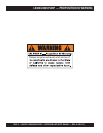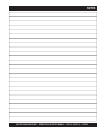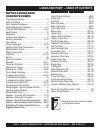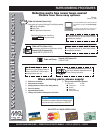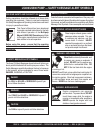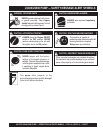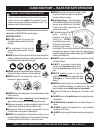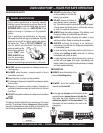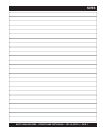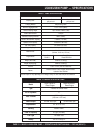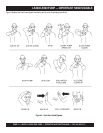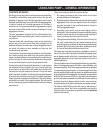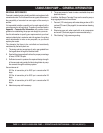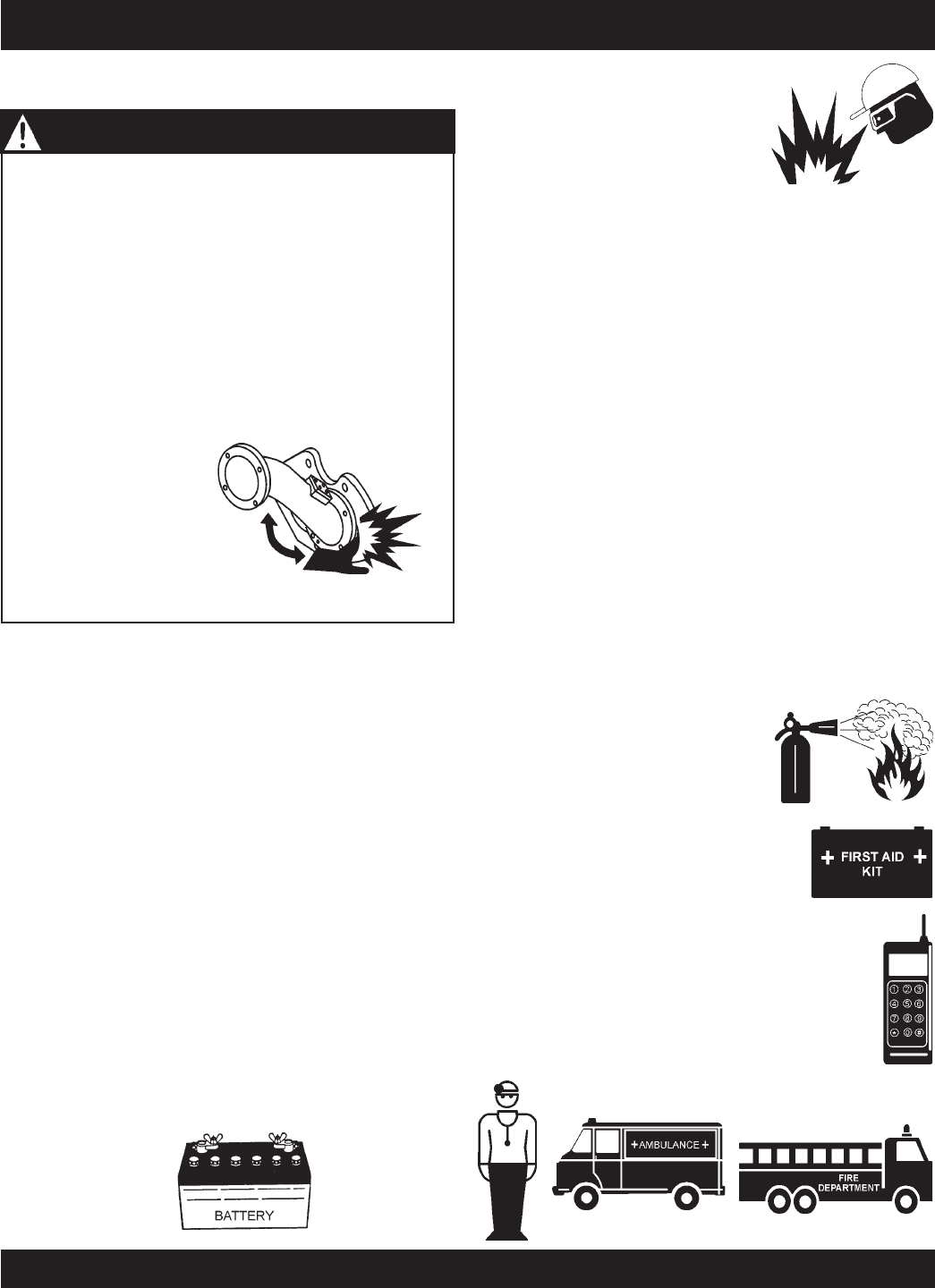
PAGE 10 — MAYCO LS400/LS500 PUMP — OPERATION AND PARTS MANUAL — REV. #6 (09/19/11)
LS400/LS500 PUMP — RULES FOR SAFE OPERATION
EMERGENCIES
■
ALWAYS know the location of the
nearest
fire extinguisher
.
■
ALWAYS know the location of the
nearest and
first aid kit
.
■
In emergencies
always
know the location of the
nearest phone or
keep a phone on the job site
.
Also know the phone numbers of the nearest
ambulance
,
doctor
and
fire department
. This
information will be invaluable in the case of an
emergency.
BATTERY
The battery contains acids that can cause injury to the eyes
and skin. To avoid eye irritation,
always
wear safety glasses.
Use well insulated gloves when picking up the battery. Use
the following guidelines when handling the battery:
■■
■■
■
DO NOT drop the battery. There
is the possibility of risk that the
battery may explode.
■■
■■
■
DO NOT expose the battery to
open flames, sparks, cigarettes
etc. The battery contains combustible gases and liquids.
If these gases and liquids come in contact with a flame
or spark, an explosion could occur.
■■
■■
■
ALWAYS keep the battery charged. If the battery is not
charged a buildup of combustible gas will occur.
■■
■■
■
ALWAYS keep battery charging and cables in good
working condition. Repair or replace all worn cables.
■■
■■
■
ALWAYS recharge the battery in an vented air
environment, to avoid risk of a dangerous concentration
of combustible gases.
■■
■■
■
In case the battery liquid (dilute sulfuric acid) comes in
contact with
clothing or skin
, rinse skin or clothing
immediately with plenty of water.
■■
■■
■
In case the battery liquid (dilute sulfuric acid) comes in
contact with your eyes, rinse eyes immediately with
plenty of water, then contact the nearest doctor or hospital,
and seek medical attention.
MAINTENANCE SAFETY
■
NEVER lubricate components or attempt service on a
running pump .
■
ALWAYS allow the pump a proper amount of time to
cool before servicing.
■
Keep the pump in proper running condition.
■
Fix damage to the pump immediately and always replace
broken parts.
■
Dispose of hazardous waste properly. Examples of
potentially hazardous waste are used motor oil, fuel and
fuel filters.
■
DO NOT use plastic containers to dispose of hazardous
waste.
During routine maintenance or removing material
blockage, you will be required to put your hand in the
concrete cylinders or near the shuttle tube. You are at
EXTREME RISK
of injury or
AMPUTATION
if the
engine is running or if pressure is in the hydraulic
system.
Prior to performing any maintenance on the pump,
follow described lock out-tag out procedures. Stop the
engine by turning off the ignition switch and remove
the starter key. Place a “DO NOT OPERATE” tag
over the switch and disconnect the battery. The
pressure reading on the
accumulator pressure
gauge
MUST
read
ZERO. ALWAYS make
sure the accumulator
circuit pressure reads
zero prior to performing any maintenance on the pump.
DANGER - AMPUTATION RISK



